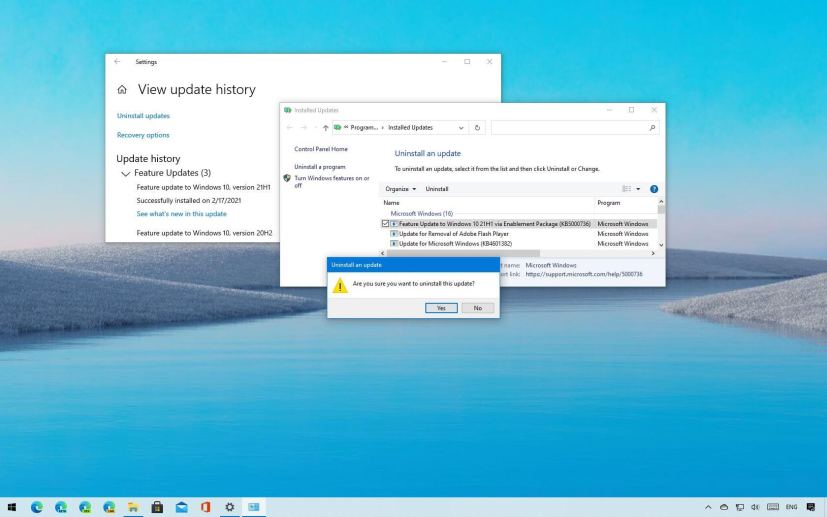
Windows 10 21H1 (May 2021 Update) is officially available for compatible devices starting May 18, 2021. However, if the new version causes problems because of an unknown bug or compatibility issue, you can uninstall it to roll back to a previous version. The only caveat is that removing the feature update will depend on how you upgraded the computer.
If the device was already running version 2004 or version 20H2, you could uninstall the update using the same steps to remove a monthly update. On the other hand, if you are running an older release like version 1909, you will have to use the built-in recovery settings.
In this guide, you will learn the steps to uninstall the 21H1 update to revert to the previous version of Windows 10 without losing your files.
Uninstall Windows 10 21H1 from version 20H2 or 2004
To uninstall Windows 10 21H1 (May 2021 Update) from version 20H2 or 2004, use these steps:
-
Open Settings on Windows 10.
-
Click on Update & Security.
-
Click on Windows Update.
-
Click the View update history option.
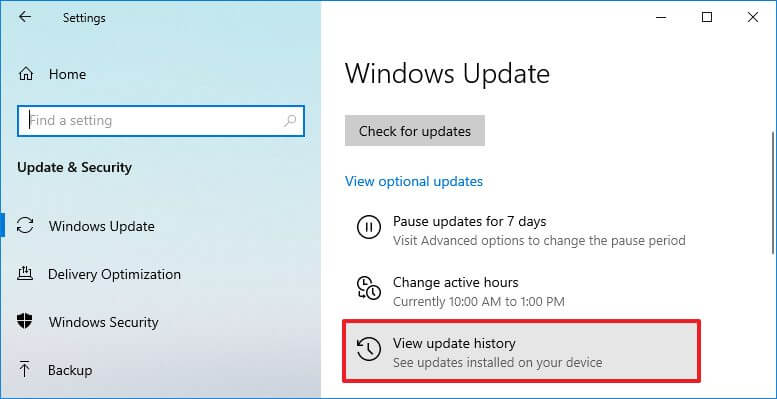
Windows 10 21H1 view update history -
Click the Uninstall updates option.
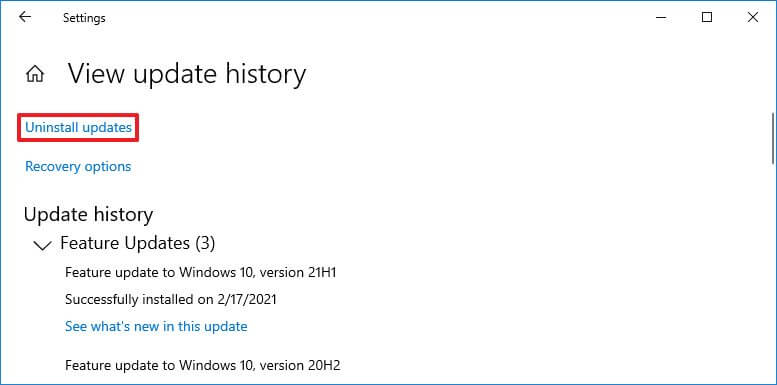
Uninstall updates option -
Select the Feature Update to Windows 10 21H1 via Enablement Package (KB5000736) that matches the installation date.
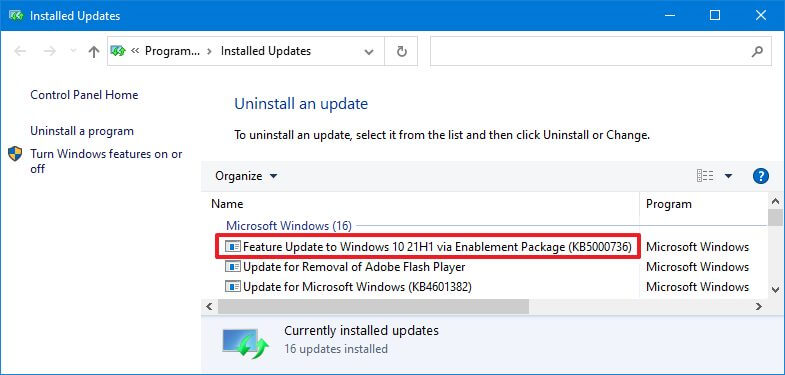
Windows 10 21H1 (KB500736) uninstall -
Click the Uninstall button.
-
Click the Yes button to confirm.
-
Click the Restart now button.
Once you complete the steps, the update containing the version 21H1 bits will be removed, bringing the device back to version 2004 or 20H2.
You can also watch this video tutorial to remove the enablement package to roll back to the previous version.
Uninstall Windows 10 21H1 from version 1909
To remove the Windows 10 May 2021 Update from on a PC previously running version 1909 or older release, use these steps:
-
Open Settings.
-
Click on Update & Security.
-
Click on Recovery.
-
Under the “Go back to the previous version of Windows 10” section, click the Get started button.
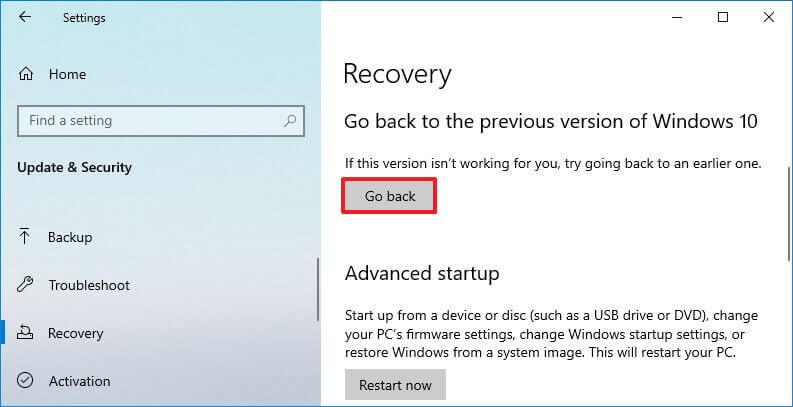
Windows 10 recovery remove 21H1 option -
Select a reason to uninstall version 21H1.
-
Click the Next button.
-
Click the No, thanks button.
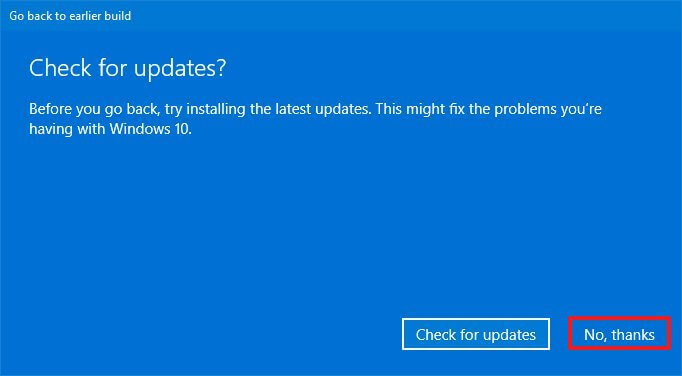
Skip check for updates -
Click the Next button.
-
Click the Next button again.
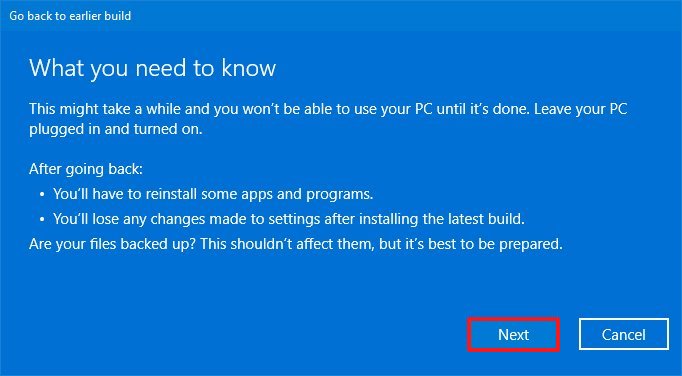
Windows 10 21H1 uninstall info -
Click the Go back to earlier build button.
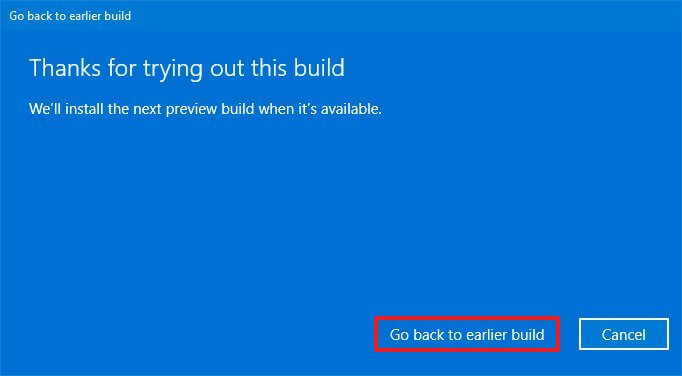
Windows 10 21H1 rollback to an older version
After you complete the steps, the feature update will uninstall, and the device will revert to the previous version.
You can also watch this video tutorial with the steps to remove the update to roll back to the previous version if you upgraded with a full installation.
Missing Windows 10 uninstall option
When the device upgrades to a new version, Windows 10 automatically saves a copy of the previous version in the Windows.old folder to roll back if something happens. If the upgrade completes successfully, the Windows.old folder will be stored on the device, and you can use the above instructions to remove the Windows 10 May 2021 Update.
If the Windows.old folder is not present in the root of the “C” drive, you won’t be able to uninstall the feature update. Typically, after ten days from the original installation, Windows 10 will automatically delete the previous setup files to free up space. As a result, the option to roll back will be removed.
In the case that you have the files for the previous version, but the option is not available, then there is another issue. You can still downgrade, but you will need to use a clean installation of Windows 10 using an ISO file that contains the older version you want to use. After the process, you can always try to reinstall the feature update again.
If you no longer have the option to roll back, you can use this guide to configure the system to keep the previous installation for a longer period to allow more time to uninstall an upgrade during the next release of Windows 10.
